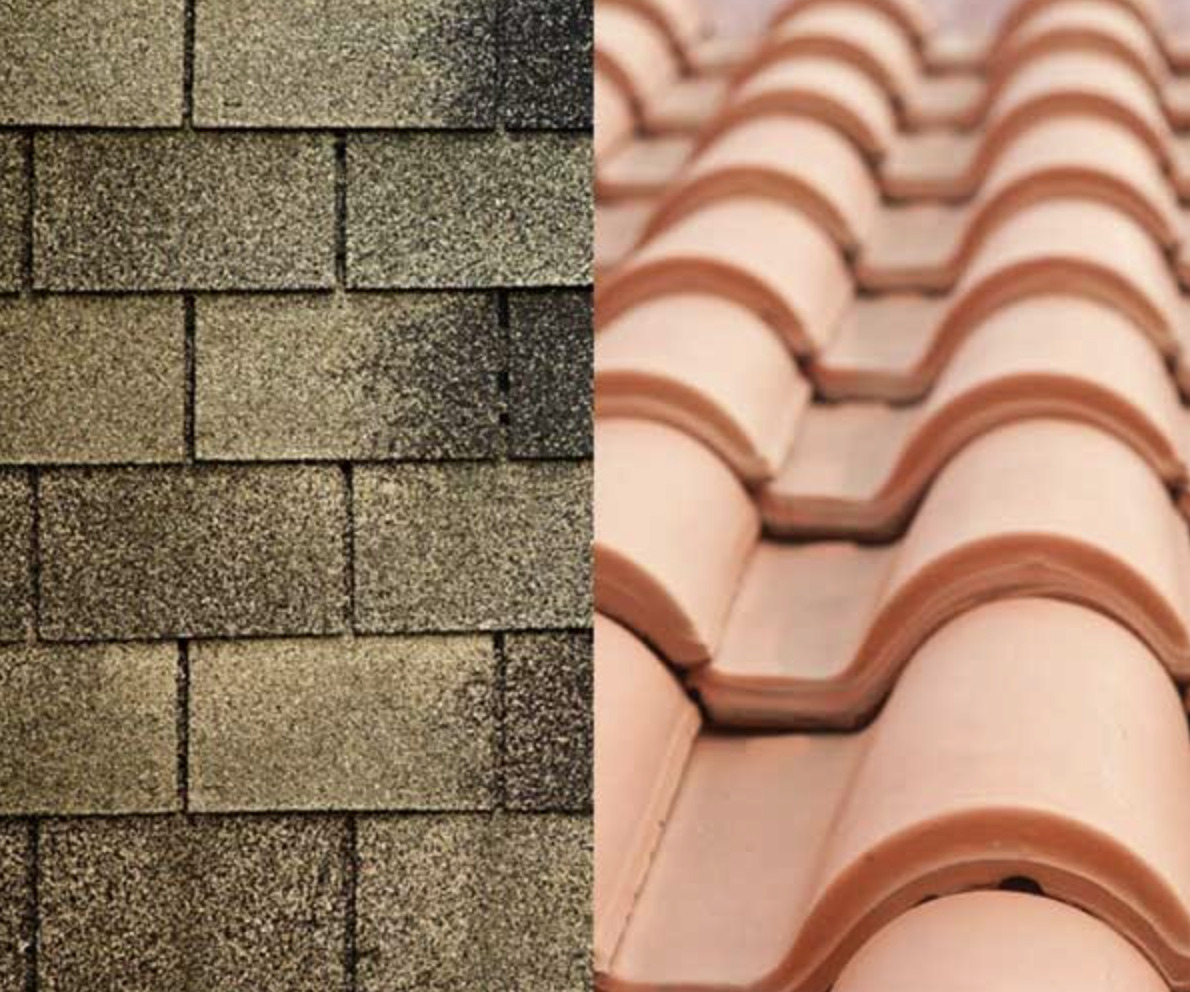When it comes to the roof of your home, you want it to last as long as possible. The good news is that there are many different types of roofing materials out there, each with their own pros and cons.
Let’s look at some of them below:
Wood Shingles
Wood shingles are a great choice for homes in the country, or those that have a rustic look. Wood shingles are very durable, but they require regular maintenance. They’re more expensive than other materials–but if you want your home to look like it’s been around for centuries, this is your best bet!
Asphalt Shingles
Asphalt shingles are the most common type of roofing material. They’re made from recycled materials and, because they’re so easy to install, you can save yourself some money by doing the work yourself. Asphalt is also affordable; even though it’s not as durable as cedar shakes or slate tiles (see below), it will last for decades before needing replacement.
Asphalt does have its downsides: it’s not very eco-friendly because it requires fossil fuels during manufacturing; its lifespan is shorter than other options; and there’s some concern about how well asphalt roofs hold up against hail damage in areas where that kind of weather is common (though this hasn’t been proven yet).
Tile and Slate Shingles
You’ll find slate tiles on roofs all over, and for good reason: they’re durable and long lasting. They can last up to 50 years with proper care, which means that if you choose this option for your home, you won’t be having to replace it any time soon.
Slate also has some other benefits that make it an attractive option as well. For one thing, slate is fireproof–and not just resistant but actually impervious to fire damage because of its high melting point (1,220 degrees Celsius). This makes slate an excellent choice if you live in an area prone to wildfires or other types of disasters where fires are likely to occur regularly (like California). It’s worth noting here too that while most roofs made from other materials will burn up when exposed directly under extreme heat sources like flames from nearby fires or lightning strikes; slates are known for being able not only withstand such conditions but also protect whatever’s underneath them from getting damaged by them too! So if nothing else then consider these reasons alone why homeowners might want consider installing a new shingle roofing system onto their home today…
Metal Roofing
Metal roofing can be a great choice for your home. It’s durable, low maintenance and fire resistant. Metal roofs are also available in many styles to suit your needs and taste. Metal roofing comes in several colors and finishes including copper, bronze and silver with various textures that mimic wood shakes or slate shingles. The metal panels can be installed with screws or rivets directly over the sheathing of your home’s existing wood or concrete framing system (single layer).
These products have the ability to last up to 50 years without requiring any major repairs during this time period unlike asphalt shingles which will need replacing every 10 years on average due to deterioration caused by weather elements like rainwater infiltration into their surface structure causing cracking/peeling off at edges due to exposure over time; thus requiring frequent replacement cycles at high costs associated with labor involved plus material costs associated with purchasing new ones each time it happens – something homeowners don’t want happening often since these types tend not only cost money but also waste precious time away from doing other things such as spending quality time with family members instead!
Roofing materials have different benefits, so make sure you pick the right one for your home.
When you’re choosing a roofing material, it’s important to think about the climate and style of your home. For example, asphalt shingles are the most common roofing material in the United States, but they’re not ideal for all climates (especially those with extreme heat or cold). Wood shingles are a good choice if you want something that has an earthy feel and looks great on rustic houses.
Regardless of which type of roofing material you choose, make sure it suits your needs–and that means more than just picking one because it looks nice!
Asphalt Shingles Advantages and Disadvantages
Asphalt shingles are the most common type of roofing material. They’re relatively inexpensive, easy to install and lightweight. Asphalt also comes in many different colors to match your home’s style or color scheme.
Asphalt is made from petroleum products such as crude oil or natural gas, which means it’s not as renewable as other materials like wood or metal. This can be an issue if you want to reduce your carbon footprint by using more sustainable products–but if you don’t mind using fossil fuels for your asphalt shingle installation, then it could be a good option for you!
Wood Shingles or Shakes Advantages and Disadvantages
Wood shingles and shakes are made from cedar, redwood or other natural woods. They’re a good choice because they are durable and can last for decades if properly maintained. However, wood shingles generally cost more than other roofing materials such as asphalt shingles or metal roofing panels. They may also be more difficult to install than some alternatives because you’ll need heavy equipment to lift the large pieces into place on your home’s roofline.
Metal Roofing Advantages and Disadvantages
Metal roofs are durable, fire resistant and can last for decades without needing replacement. They’re also resistant to hail and wind damage. Metal roofs are highly recyclable, which means they can help reduce the amount of waste sent to landfills.
Metal roofing also has some disadvantages: they may cost more than asphalt shingles (though this will depend on your region), they can be noisy when it rains because they drain water into gutters that run along each side of the house and downspouts at each corner; some types of metal have a tendency to rust if not properly cared for; metal roofs require special care when installing them on older homes because old materials like wood siding may not be able to handle the weight of these heavy materials
Tile Roof Advantages and Disadvantages
Tile roofs have many advantages. They are generally more durable than asphalt shingles, which can last anywhere from 15 to 50 years. Tile roofs also tend to be fire resistant and last longer than other types of materials used for residential roofs.
Tile roofs do come with some disadvantages, however. They are more expensive than asphalt shingles because they require more material and labor for installation. Additionally, tile is heavier than other types of roofing materials so it may take longer for someone with little experience installing a tile roof to complete the job properly without causing damage or leaks in your home’s structure below the surface level where you cannot see them easily yourself after installation has been completed by professional contractors working on site at your home or business location during construction work hours only please call us now if you’d like help finding someone near me today!
Rubber Slate or Synthetic Slate Advantages and Disadvantages
Synthetic slate is a rubberized asphalt that has been molded into the shape of natural slate. It’s lightweight and easy to install, which makes it ideal for areas with heavy snowfall or high winds. However, synthetic slate isn’t as durable as natural slate and can only last about 20 years before needing replacement.
- Pros: Synthetic roofing materials have some distinct advantages over other types of shingles such as asphalt shingles or metal roofing panels. These include their ability to withstand severe weather conditions such as heavy rainstorms or hail storms without sustaining damage; they are also easy-to-clean (just sweep them off with a broom) because they’re not made from porous materials like wood shingles; finally, synthetic slates come in colors other than gray so homeowners can choose what color suits them best!
There are many different roofing materials, each with pros and cons.
Asphalt shingles are the most common roofing material. They’re affordable, easy to install and lightweight, which makes them easy to handle. Asphalt shingles come in a wide range of colors and styles that can match your home’s exterior style.
Asphalt shingle roofs also have downsides: they need regular maintenance (including replacing worn-out tiles), are prone to leaks when damaged or improperly installed, and don’t last as long as some other types of materials do when exposed to harsh weather conditions over time.
Conclusion
With so many different roofing materials to choose from, it can be tough to decide which one is the best choice for your home. The most important thing to keep in mind when choosing your new roof is what kind of house you have and how much maintenance it will need over time. If you have any questions about the pros and cons of different types of roofs, don’t hesitate to reach out! We’re happy to help answer any questions or concerns you may have about roofing materials.



